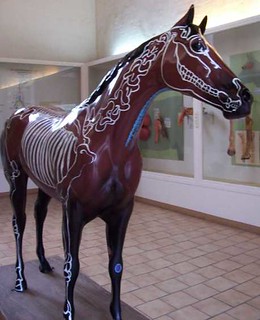So I’m thinking about going back into studying – part time – in 2009. A lot of friends are looking in vet/equine nursing at the moment and I know once I move to Wangaratta that there is a TAFE nearby that’ll facilitate doing this course. Vet nursing was appealing but as far as I can see, you need to be placed in a Vet practice to be able to fulfill the requirements of the course.
Not exactly an option for me at this point in time and it seems sorta like a catch 22 – do the course to get employed; need to be employed to be accepted into the course.

Now as someone who is more partial to just learning the equine related bits – and purely for my own want to learn more rather than gain employment in this field – the Certificate III in Equine Nursing looks very appealing. You can be employed on a stud and do the course part time. Stud work is definitely something I envisage going back to in 12 months time, so this seems perfect.
If you’re considering Vet Nursing and have a passion for horses, consider whether Equine Nursing is the way to go or if you want to cover a broader range of animals and then specialise.
“This course is for people who want to work in a specialist equine facility as a competent equine nurse. You will learn about horse health, anatomy and physiology, an introduction to horse breeding, foal care and nursing, equine medical and surgical nursing, equine clinical pathology, equine radiographic and anaesthetic nursing.”
Entry requirements – year 12; related occupations – veterinary nurse.
http://www.hunter.tafensw.edu.au/
Cert. III GOTAFE
http://www.gotafe.vic.edu.au/courses/course_info.cfm?CID=91165NSW
Entry Requirements – Applicants should be working in the thoroughbred industry, or a veterinary practice specialising in equine services. Veterinary Nurses working in general practices may also apply, and may be required to undertake a suitable equine related practical placement.
18 months, part time.
Veterinary Nursing
http://www.learndirect-advice.co.uk/helpwithyourcareer/jobprofiles/profiles/profile169/ – questions regarding work conditions, qualifications needed, expected wage and more.
Equine Nursing Guide – http://www.beva.org.uk/taxonomy/term/102
Veterinary Nurse Occupation Information – http://www.myfuture.edu.au/services/default.asp?FunctionID=5050&ASCO=639211A
“The horse is dangerous at both ends and uncomfortable in the middle.”
tag: certificate III, TAFE, equine nursing, vet nursing, self education, course, australia, united kingdom

